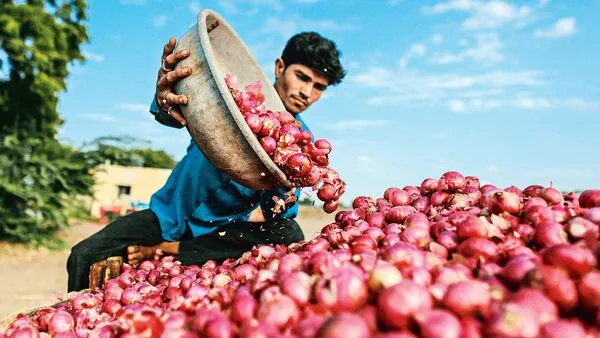Onion prices have spiked by 21 per cent within four days, reaching a five-year high of over Rs 60 per kg in several markets, which experts suggest may influence inflation figures for November, according to a report by The Economic Times. Alongside onions, the costs of potatoes and cooking oils are expected to remain high this month.

Expectations of a bumper kharif harvest have been disrupted by heavy rainfall in September, which affected the quality and delayed the arrival of new onions. The Economic Times quoted Vikas Singh, vice-president of the Horticulture Producer Exporters’ Association saying the rain has impacted both the quality and timely arrival of the crop.
Reserve Bank of India (RBI) Governor Shaktikanta Das noted that October’s Consumer Price Index (CPI) is likely to exceed the 5.5 per cent recorded in September. This increase is attributed in part to rising vegetable prices. Onions are currently priced between Rs 60-80 per kg in retail markets and are expected to stay high through Diwali and after. The surge is primarily driven by heavy rainfall in key onion-producing states such as Maharashtra, Karnataka, Telangana, and Andhra Pradesh, which has damaged crops and hindered supply. The heavy rainfall has significantly impacted the quality of onions ready for harvest across southern states. The report quoted Tonkini Pramod Kumar, a trader from Hyderabad and owner of Sri Swami Ayyappa Traders, as saying that the quality of onions has deteriorated substantially due to severe rainfall in Kurnool and other areas of Telangana and Andhra Pradesh.
As a result, prices of onions, tomatoes, and cooking oils have contributed to September’s inflation hitting a nine-month high, with food inflation expected to remain elevated in October, according to a report by The Economic Times. The government had anticipated a drop in prices coinciding with the harvest of the kharif crop, which is underway in several southern states. However, ongoing heavy rains have adversely affected crop quality in various regions, leading to waterlogged fields and delaying harvests by 10 to 15 days, further straining supply.
